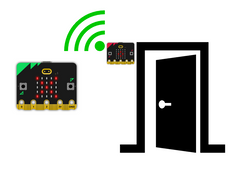crwdns259700:0crwdne259700:0
crwdns259702:0crwdne259702:0
crwdns259704:0crwdne259704:0 crwdns259706:0crwdne259706:0
crwdns274208:0crwdne274208:0
crwdns274210:0crwdne274210:0
crwdns259712:0crwdne259712:0
- crwdns259714:0crwdne259714:0
- crwdns259716:0crwdne259716:0 crwdns259718:0crwdne259718:0
- crwdns259720:0crwdne259720:0
- crwdns291058:0crwdne291058:0
- crwdns259724:0crwdne259724:0 crwdns259726:0crwdne259726:0
- crwdns259728:0crwdne259728:0 crwdns259730:0crwdne259730:0 crwdns259732:0crwdne259732:0 crwdns259734:0crwdne259734:0
- crwdns259736:0crwdne259736:0
crwdns354362:0crwdne354362:0
- crwdns354364:0crwdne354364:0
- crwdns354366:0crwdne354366:0
- crwdns354368:0crwdne354368:0
- crwdns354370:0crwdne354370:0
- crwdns354372:0crwdne354372:0
crwdns354374:0crwdne354374:0
1# Python uses nanoteslas to measure magnetism.
2# Experiment with different numbers depending on the
3# strength of your magnet, which you can read by
4# pressing button A.
5
6from microbit import *
7
8while True:
9 if button_a.was_pressed():
10 display.scroll(compass.get_field_strength())
11 if compass.get_field_strength() < 200000:
12 display.show(Image.ANGRY)crwdns354376:0crwdne354376:0
- crwdns354378:0crwdne354378:0
- crwdns354380:0crwdne354380:0
- crwdns354382:0crwdne354382:0
This content is published under a Creative Commons Attribution-ShareAlike 4.0 International (CC BY-SA 4.0) licence.


